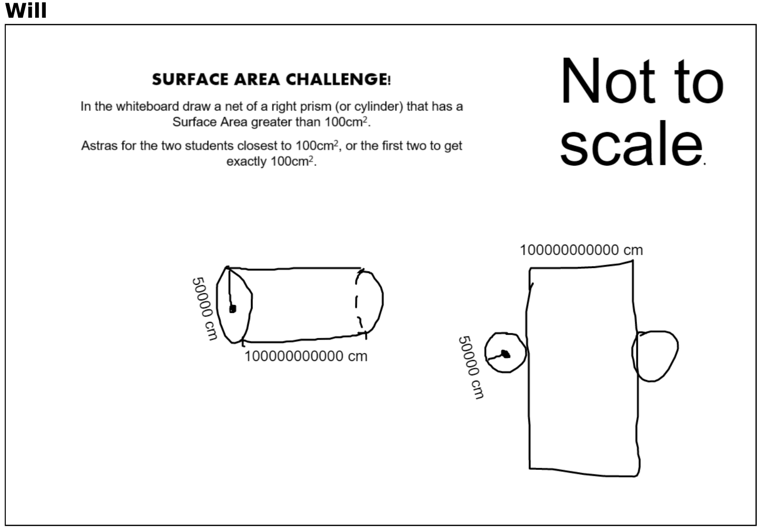Your Workshopping of Concept-specific OEQs
Implementation Report (& Peer Reviews)
We have two tasks for you:
1) Your Implementation report
Post your implementation report below.
2) Your Peer Review
Go to one of the implementation reports, click 'Reply' and write a feedback comment. (Please keep your peer review/s separate from your own submission.)
Guidelines for peer reviews
- Write one or two things you liked.
- Write one suggestion for improvement if applicable.
Keep progressing to the last page of the last module ...
After writing your comment, navigate through all pages of this and the next (final) module. The last page is where you inform us you have finished!
Thanks,
Richard.
Some Past Reports ...
|
Anonymous
I implemented w/s of OEQs with my 08MAT2 (AC) class. The topic was Linear Relationships and the questions I used were based around generating a family of equations with a specified solution. What worked best: Seeing what my students were capable of! Some took a very straightforward approach, some tried to make it hard as they could for themselves (with mixed results). When students gave an incorrect response, we talked about how to modify the given answer to make it correct. Being able to see how elastic the maths could be was a powerful chat for the students. What I thought could work better next time: Using an online whiteboard for responses. I used the MS teams chat, and found that the responses of the keener students drowned out the more thoughtful. I think using an online whiteboard would let students generate their own solutions, without being distracted or discouraged by other responses How it was for me: Amazing! At first, I got a lot of very safe, 1-step response (eg. 8x = -8 or x + 9 = 8). However once I introduced restrictions/requirements, the answers slowed down and you could see the students thinking. I managed to break them when I required the use of square roots with the pronumeral under the radical sign. But to get to that point was pretty pleasing for a first effort. I just started posing the question to them, no mention of trying a different method or approach. Just threw them the question and facilitated the discussion. I think it was a pretty safe & vanilla approach for my first attempt. I will try something a little more challenging in the future. |
Anonymous
I implemented w/s of OEQs with my 10MTH1 (Erina HS) class. The topic was Quadratic Equations and the questions I used were based around generating a family of equations with a specified solution. What worked best: Being able to work a physical room with the OEQs technique. The students struggled with this approach, as they were so used to a solution being just that. Having not studied non-linear relationships since last year, the idea of dilated and stretched functions was long forgotten, so being able to play off the room's energy and get students to bounce ideas was powerful. It took a bit more prompting that I would have liked to, but this was a big change for this class, so I think they responded better than I could have hoped. What I thought could work better next time: As much as the students struggled, I was happy with how it went. I wanted to challenge the students to think more broadly, and after some resistance, they did. I would have liked to have prompted them less, but I think I may have lost them if I didn't. How it was for me: Amazing again! This was similar approach to my first lesson with year 8, but to take it to the Quadratic equations level was a real eye opener. At first I went with simple monic quadratics, however the responses were all the same. I maintained that there were an infinite number of solutions for a quadratic with a solution of x = 3 or 7. After some thought, students started to remember that as long as the contents of the bracket reduced to zero, and the x values were 3 or 7, the solution worked, and they started to introduce coefficient terms to the x^2 value, either by changing the contents of the bracket, or expanding and multiplying the equation by a constant term. I then turned the screws and gave them a solution in surd form, ie x = (-4 ± sqrt(17))/4, and this blew the doors off of a few students. However, when I asked them to think about where that form of a solution came from, some twigged that they could reverse engineer a quadratic equation from the terms in the quadratic formula. A few students carried through the concept of multiplying by a constant term from the first questions and managed to generate a family of equations that satisified the given solution. Overall, a powerful tool to really get the students to think and apply the skills they had to an unfamiliar question. |



















